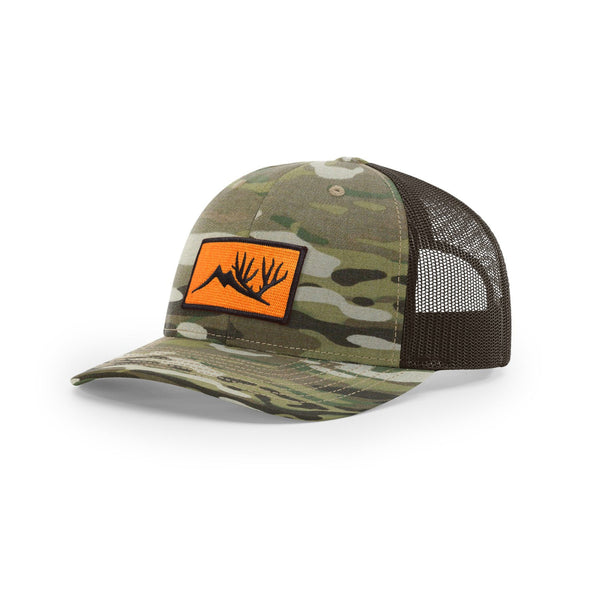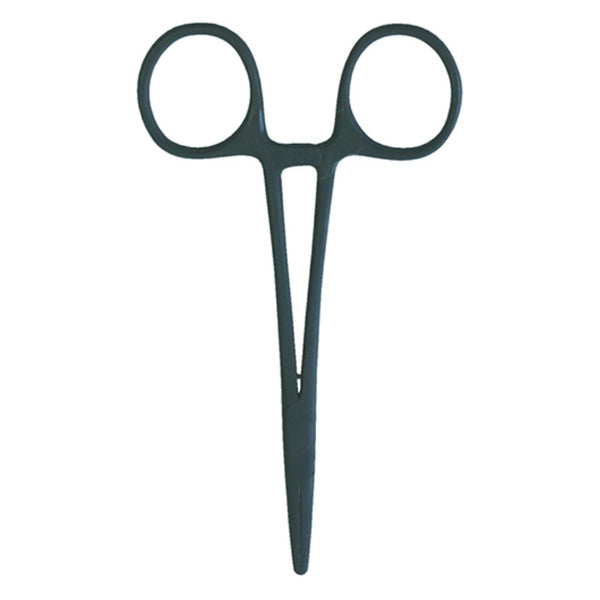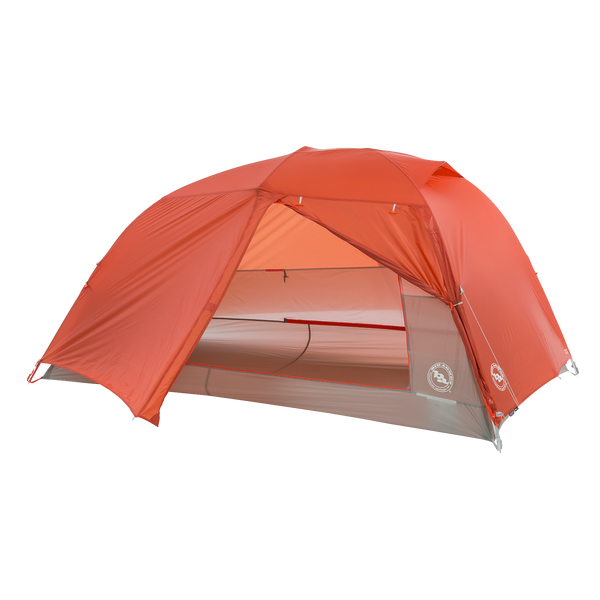Wildlife management is one of the more complicated concepts to wrap my head around. I am constantly searching through various sources of information in hopes of better understanding the intricacies so I can feel like more of an educated user of this incredible resource. My desire is to also learn how to contribute more helpful in-field information to local Wyoming Game and Fish personnel when they seek public comment.
In the past few years I have been fairly active in the conversations and presentations held regarding the Platte Valley mule deer herd, which is found within the Snowy Range Mountains in southeastern Wyoming. Local area residents who have lived in the area for better than 40 years can tell stories of days long gone that hold memories of healthy amounts of deer scattered across the mountains, including bucks that would make a person anticipate a quality of harvest from this area that we might never see again in our lifetimes.
A few years ago the Game and Fish began public meetings in various cities throughout the southeast region of Wyoming. Their goal was to initiate conversations that would not only educate the concerned populous on the current conditions of the deer, but to engage in brainstorming activities that would give them the feedback to continue with a solid plan of action. As a result, we now have the Platte Valley Mule Deer Initiative, which has also produced the Platte Valley Habitat Partnership. The initiative drives the goals, expectations, guidelines, and limitations of the overall herd management going forward. The partnership was formed as a funnel for decision making and cooperation among interested agencies and organizations.
But even after reading the white papers and attending numerous meetings, I still carried voids in my understanding of the overall picture. Here are the results of questions I posed to local Game and Fish personnel Corey Class, Laramie Regional Wildlife Coordinator; Will Schultz, Saratoga Wildlife Biologist; and Rick King, Regional Wildlife Supervisor.
“None of these questions have easy answers, mule deer management is a difficult business. I liken it to having a bucket with a hundred holes in it, and you only have 10 fingers, so you have to focus on the holes you think you can plug.” – Corey Class, Laramie Regional Wildlife Coordinator
Q: What do you think it is going to take for the BLM to allow significant habitat improvements on their lands?
A: There are a lot of challenges for the BLM when it comes to mule deer management. First and foremost, BLM has to provide “multiple use” on their lands. This means that they have to consider all users of public land the same. These users include but are not limited to; hunters, OHVr’s, hikers, horseback riders, ranchers, mountain bikers, cross country skiers, wildlife watchers, miners, loggers, fire wood cutters, etc. Additionally, the BLM must consider energy developments (oil, gas, wind, transmission lines) on their lands. BLM is also charged with considering all wildlife particularly, threatened and endangered wildlife and candidate species like the sage grouse. BLM also has to face litigation when a group or groups do not agree with their management direction or reasoning. And finally, the BLM is dealing with fewer funds than they have had in the past, which can reduce their efforts. With all the factors mentioned above, it becomes clear that the BLM cannot just throw all of their eggs in the mule deer management basket.
The Rawlins district BLM is actually doing quite a lot for mule deer. I think the things that will allow BLM to continue to do good things for mule deer or even increase them are; increased partner funding like the $500,000 that Game and Fish provided as seed money to Platte Valley Habitat Partnership (PVHP), increased support on mule deer projects, and for the public to continue to tell BLM officials how important mule deer management is to them and their local community.
Q: Why did the population count change so drastically in 2011?
A: Our current population model, the 2013 Wyoming Spreadsheet Model, estimated that there has been a decline in the postseason mule deer population since 2001. In 2009, 2010, and 2011 WGFD conducted sightability surveys in the Platte Valley herd unit. These surveys provided independent population estimates which when incorporated into the Wyoming Spreadsheet model, provided a "statistical grounding effect" for the model simulation. The results were postseason population estimates which were strongly correlated to the sightability survey results. These estimates were lower than previous model estimates that utilized less data. The sightability abundance estimates conducted in the Platte Valley improved the accuracy and precision of the population estimates derived from the Wyoming Spreadsheet model.
Q: Explain the process involved with the sightability survey abundance estimation technique. How does it vary from techniques used in the past? What prompted the change to this technique?
A: The sightability model for deer is currently used as a primary management tool for the Idaho Department of Fish and Game. While the sightability concept did not start in Idaho, Idaho has refined the technique and utilizes it to estimate mule deer abundance on approximately a 5 year schedule for each mule deer herd. The sightabilty model uses the following variables to provide a sightability correction to the actual number of deer observed in the flight; vegetation type (conifers, juniper/mahogany, aspen/mountain brush, sagebrush, and open/agricultural vegetation types), activity (bedded, standing, moving), snow cover percentage (0-100%), and mule deer group size. The model was designed by having known collared deer flown by an observer who knew where the deer were (radio collars), and then flown by observers who did not know where the collared deer were. The observers would exchange data, and those collared deer that were missed were counted and all variables were recorded (vegetation type, activity, snow %, etc.). A model was created using these data points to determine how many deer were missed by vegetation type, snow cover, and movement types. The sightability model assumes that the observers do not see every deer out there, and add a slight correction value to account for those deer that were missed. The sightability model also requires that the area to be surveyed be broken into search units that can be fully flown within one hour, and that the surveys are flown in a “bubble” ship, preferably a Bell 47 Soloy. Bubble ships are preferred since they have such an open canopy and provide the highest visibility amongst the various types of helicopters.
Prior to the sightability surveys, the postseason population estimate was developed the same way we developed estimates for almost every other mule deer herd unit in Wyoming; which was, and still is, developing population models based only on annual harvest and classification data (animals counted and classified into bucks, does, and fawns). One notable change was that previously we utilized POP2 population models, and now we have upgraded to the Wyoming Spreadsheet model. I think the most important thing here to emphasize is that sightability surveys provide for an independent population estimate which can be incorporated into a population model. This increases both the accuracy and precision of the model. There is other information which could also be incorporated into population models to improve accuracy and precision, such as annual survival rates for adults and fawns. However, long term radio-collar monitoring projects needed to develop survival rate data, and, or conducting sightabilty surveys in every herd unit in Wyoming is essentially cost prohibitive.
Q: What were the main factors prompting the inception of the PVMDI?
A: Shortly after WGFD adopted the Wyoming Mule Deer Initiative (link below) in 2007, we selected the Wyoming Range and Platte Valley mule deer herd units as the first 2 herd units to begin implementing the concepts identified in Initiative. Although these herds units are very different from one another, they do share some commonalities. Both herd units are very popular destinations for hunters, they both share many of the same issues such as reduced habitat quality and quantity, and finally, they both were herd units where WGFD had received significant criticism in the past from the public with regard to mule deer management.
http://wgfd.wyo.gov/web2011/Departments/Wildlife/pdfs/WYMULEDEERINITIATIVE_FINAL0000344.pdf
Q: How many deer have been collared as a result of the PVMDI?
A: There were 70 mule deer does collared in the original effort. Nineteen of these animals died in the first year, so those 19 collars were placed on new animals for a total of 89 mule deer does collared. These collars will be used to determine habitat use, migratory movements and bottlenecks, and adult mule deer doe survival rates.
Q: In what ways is Colorado assisting with the PVMDI?
A: Currently Colorado is assisting with PVMDI through increased coordination between the wildlife biologists charged with managing the Platte Valley/North Park herd. Biologists have been learning more and more about these mule deer and their indifference to the WY/CO border. This is truly an interstate mule deer herd, and we are realizing the importance of working together to manage it. Future collaboration efforts include a sightability surveys in both states at the same time, and interstate habitat projects.
Q: What habitat improvement projects are considered complete? Which projects are in process? What projects will begin soon?
A: The first official PVHP projects will be implemented this spring (2014). The projects will focus on; sage brush and bitterbrush management, removal of wildlife unfriendly fence and replacing it with wildlife friendly fence, aspen regeneration, native grass and forb seedings, and deferred grazing. There will be opportunities for those who are interested to come out and help, particularly on the fencing projects. The Voices of the Valley website will have these opportunities posted (http://vovwyoming.org/pvhp/).
There are numerous habitat projects that are either completed or ongoing that were not funded through PVHP but are still contributing to the betterment of habitat in the Platte Valley. There have been thousands of acres of habitat improvements prior to the PVHP that occurred on private land, and BLM and USFS lands. A detailed version of these projects can be found in the PVHP plan on the Game and Fish website (pages 46-58) http://wgfd.wyo.gov/web2011/Departments/Wildlife/pdfs/PVHP_FINALPLAN0004384.pdf
Q: How can the public assist better in the PVMDI efforts?
A: Support state and federal agencies in their efforts to manage for mule deer and their habitat within the Platte Valley. Come and lend a hand during some of the upcoming volunteer efforts. Spread the word to other outdoor enthusiasts regarding the challenges of mule deer management, and existence of the Platte Valley Mule Deer Initiative (PVMDI) and Platte Valley Habitat Partnership (PVHP). Encourage continued public participation in both the PVMDI and PVHP. Assist PVHP in future habitat project fund raising efforts. Encourage non-government organizations (NGO’s) to focus on mule deer management.
Q: What were the main factors influencing the drastic decrease in the Platte Valley mule deer? When was the last time the herds were at the objective population of 20,000 deer?
A:
• Decreasing quality/quantity of habitat
• Population Management/Harvest Strategy
• Disturbance
• Interspecies Competition (elk, white-tailed deer, livestock)
• Predation
Based on our current population models for Platte Valley deer it appears the last time the population was at 20,000 (population objective) was in 2000. As mentioned in some of the other answers I provided, WGFD has changed how we count deer and we have changed our population estimation technique, giving us a more accurate and precise value, improving the accuracy and precision of our spreadsheet population models as a result. It’s hard to say if we were ever reached 20,000 mule deer in the past, but it is very safe to say that we have fewer mule deer now than we had before.
Q: In your best estimation, how long do you think it will take the herds to go from the current number of a little over 8,700 to the herd objective of 20,000?
A: The answer is, I don’t know when or if the mule deer population could return to 20,000 mule deer. Is it possible to attain a herd of 20,000 mule deer in the Platte Valley again? Maybe. But it would require the perfect storm. We would need to get above average precipitation for many years in the spring, summer, and early fall. We would need to have mild winters in both temperature and snowfall in the valleys, but still get above average precipitation in the mountains to keep everything lush and green throughout the growing season. Human development/disturbance within the Platte Valley would need to cease or even revert to a lesser amount than presently exists. The USFS and BLM would have to declare mule deer a primary management focus and begin managing for mule deer at the landscape scale (thousands of acres of projects). Colorado would have to do all of the same things. And, folks in the valley would have to be willing to tolerate over twice the number of deer that there currently are in the Platte Valley.
Q: Was the change from the general season to limited quota for herd management or hunter satisfaction?
A: The switch from general deer seasons to limited quota was done to increase hunter satisfaction. Limited quota seasons will not increase mule deer populations but they will; decrease hunter crowding, increase hunter success, increase buck ratios, increase the proportion of mature mule deer bucks available for harvest, and decrease hunter opportunity. General buck seasons will allow everyone that wants to hunt to do so, but general seasons will; increase hunter crowding, decrease hunter success, decrease buck ratios, and have smaller proportion of mature bucks.
Q: What percentage of fawn recruitment is needed to significantly increase the current population? And, at that rate, how many years is it projected to reach the herd objective?
A: Based on mule deer research done in the past, under average conditions we need approximately 66 fawns per 100 does to maintain a stable mule deer population. This is assuming that fawn overwinter survival is 44%, and that adult doe survival overwinter in 85%. These are average values for overwinter survival, which means sometimes its better, sometimes its worse. So sometimes the population can in fact be increasing with a fawn ratio of less than 66 fawns per hundred does if the overwinter fawn survival is greater than 44%.
Q: The prior herd maximum count of 20,000 was taken under methods proven to be inaccurate, therefore the number was most likely highly inflated. Knowing that, do you feel the current herd objective of 20,000 is reasonable or even possible?
A: The current estimate for mule deer in the Platte Valley herd is approximately 8,800 mule deer. This means the herd would have to increase by 11,200 (over double) to achieve our current population objective of 20,000. Even if we had the “perfect storm” I mentioned in a previous answer, it could take a decade to achieve the population objective, which is not likely. Realistically, given west wide decreasing mule deer population trends we should be satisfied with a stable to slightly increasing mule deer herd. Population objectives are not set in stone in Wyoming, they are supposed to be reevaluated every 5 years. If we (WGFD and the public) set a population objective that was something higher than 8,800 deer and something less than 20,000 and reached it, the population objective could be reevaluated to determine if and how it would need to be adjusted (increase, decrease, the same). Given current trends in precipitation and human development within the Platte Valley, I don’t think that a population objective of 20,000 is reasonable or possible. The only way there would be a chance of achieving the population objective of 20,000 deer would be if; every stakeholder (ranchers, USFS, BLM, WGFD, state lands, etc.) in the Platte Valley did everything within their power to improve mule deer habitat and habitat connectivity, had unlimited funding, and if we got above average precipitation at the right times for many consecutive years.
Q: Do you feel the current habitat improvement projects will provide enough of an increase in habitat quality to support the current herd objective?
A: The proposed habitat projects for 2014 in the Platte Valley will not increase habitat enough to reach the current mule deer population objective of 20,000 deer. It will take numerous habitat projects at the landscape scale (thousands of acres annually) to increase the carrying capacity enough to reach our current population objective of 20,000 mule deer. It would also take the perfect storm mentioned earlier with increased precipitation that was optimally timed. However, the proposed 2014 PVHP projects in combination with the previously completed and ongoing habitat projects are essential to ensure the long term health of this mule deer herd. Mule deer herds have and will continue to benefit from past, current, and proposed habitat projects within the Platte Valley.
Q: What is being done to manage habitat competition with elk?
A: Elk hunting seasons are very liberal within the two elk herds in the Platte Valley (Sierra Madre and the Snowy Range elk herds). Both of these populations are estimated to be decreasing, with the Snowy Range herd predicted to achieve its population objective of 6,000 elk next year. The Sierra Madre herd is still a few years away from achieving its herd objective of 5,000 elk. The Sierra Madre herd is harvesting more elk annually than any other herd in the state of Wyoming, with the Snowy Range coming in a very close second.
Q: Private land access has increased mostly just for elk and antelope. What do you feel are the major factors prohibiting an increase in access for mule deer?
A: Hunter access on private lands for elk and pronghorn has increased somewhat in recent years and is usually associated with a damage situation on a specific ranch. Hunter access on private lands for mule deer hunting has always been limited in the Platte Valley, even back in the "good ol' days." Most mule deer in the Platte Valley herd unit are actually found on accessible public lands during September and early October, so public access to hunt them is really not an issue. However, in recent years prior to a limited quota season, pressure from the large number of general season hunters on public lands coupled with legal and illegal OHV use, appeared to force some mule deer to leave the public lands in search of hiding cover on private lands.
Q: What do you think needs more regulation: road closures, OHV usage, coyote hunting (pressure on wintering deer), antler hunting (season implementation)? Would the increased regulation mostly benefit habitat, wintering deer, or fawning areas?
A: Everything that you mentioned in this question is a form of human disturbance. We know that the most critical times for mule deer are parturition/fawn rearing and winter. We know that overwinter survival is highly dependent upon the fat reserves that deer accumulate on their backs. Think of it as an energy budget, the more energy deer expend fleeing or not feeding as a result of human disturbance, the less likely they are to survive the winter. And while consumption of bitterbrush and sage brush can slow down the consumption of these fat reserves down, it typically will not increase deer fat reserves. Anytime we can reduce disturbance, particularly during these critical times, we should seek opportunities to do so.
Q: Fall 2013 was the first season of limited quota. Hunter success during that fall went up about 20 percent (from 20% to 40%, the success doubled) from the previous fall. Do you feel the change to limited quota was the only factor leading to such a significant increase in hunter success?
A: Anytime a deer hunt changes from a general season to a limited quota season we would expect to see an increase in hunter success. That being said, was the entire increase in success attributable to the switch the limited quota hunting, probably not. We had some unseasonably early winter weather that got the deer moving earlier that likely helped as well. We saw the same response to the early winter weather in the Wyoming range mule deer herd. This is why we would like to maintain the current season structure in the Platte Valley for at least 3 years before we develop any conclusions regarding limited quota hunting.
Q: To assist in habitat project costs, do you think it would be beneficial and/or possible to implement an area specific habitat improvement stamp for the limited quota deer areas within the herd unit? Is this something that has been considered?
A: This idea was brought up during the PVMDI process. While this idea has some potential, it would only generate $12,812.50/year if every Platte Valley mule deer hunter had to purchase a $12.50 stamp to hunt there. These funds would help, but we would still need to identify ways to raise more funds to accomplish habitat management at the landscape scale.



















Leave a comment